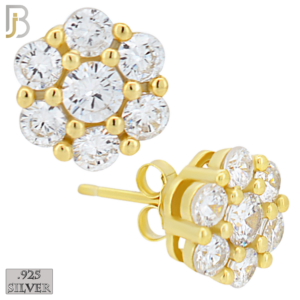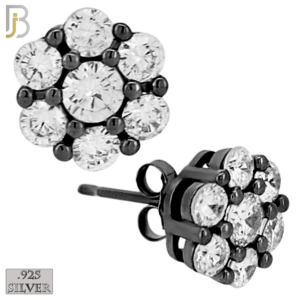Whether you’re thinking about getting a piercing, or you already have one, it’s important to make sure you choose the safest jewelry. You don’t want to get in trouble with your piercing, but you don’t want to spend a fortune on something that will break. Here are a few tips to help you get the best jewelry for your piercing.
Whether you’re getting a piercing or you’re interested in the healing process, you want to choose the best jewelry for the job. The best jewelry for the job is titanium. Titanium is a non-allergenic metal that’s durable and shiny.
It can be anodized to create various colors. This is a process that involves the introduction of electricity to the metal. It can create colors such as red and blue. However, the color may fade with time and chemical exposure.
 Stainless steel is also a durable metal that’s used in a lot of piercings. However, it’s not a good choice for initial piercings. It can be too heavy and may tug on bigger pieces. It’s also susceptible to scratches and nicks.
Stainless steel is also a durable metal that’s used in a lot of piercings. However, it’s not a good choice for initial piercings. It can be too heavy and may tug on bigger pieces. It’s also susceptible to scratches and nicks.
Titanium is also more durable than stainless steel. Because it’s stronger and more flexible, titanium will last longer. The downside is that titanium jewelry is usually more expensive. However, it’s also hypoallergenic, so you won’t have to worry about allergic reactions.
Titanium is also more resistant to corrosion, which makes it safer to wear for a long time. If you are getting pierced for the first time, titanium is the safer choice. Titanium jewelry will also not irritate the healing process.
Titanium is also the best choice for people with metal sensitivities. People with sensitive skin will appreciate the hypoallergenic construction of titanium jewelry. Titanium is hypoallergenic because it doesn’t contain nickel. However, it can be prone to skin irritation if it’s not used correctly. It’s important to check with your dermatologist before making a final decision.
In addition to being the best jewelry for the job, titanium is also the best material for a new piercing. It’s strong, shiny, and won’t irritate the healing process.
Surgical steel is an elemental metal that is a great choice for piercings. It is lightweight, strong, and won’t corrode. This type of metal is also anodized to give it different colors. It is also resistant to seawater corrosion.
However, not all types of stainless steel are suitable for 14k gold body jewelry. It is important to know the different grades. A retailer that won’t tell you the type of stainless steel you are buying is probably selling you the wrong material. You should look for retailers that have an extensive list of materials.
The most common type of stainless steel is 316L. It is a low-carbon surgical steel that will not corrode and will not release nickel into the skin. It is also considered biocompatible.
Other types of surgical steel are 316LVM and 316LLVM. These types of stainless steel contain alloys that are trapped within the metal. These alloys create a layer on the surface of the jewelry that will prevent nickel from leaching into the body. This type of surgical steel is ideal for body piercings.
If you are undergoing a first piercing, you’ll want jewelry that won’t oxidize or irritate the skin. Lead-free soda-lime glass or fused quartz glass are safe for initial piercings.
Surgical titanium is also a good choice for piercings. It’s light as aluminum, and it doesn’t corrode. It is also considered biocompatible, but it can be more expensive than surgical steel. It is also ASTM F1295 and ASTM F136 compliant. You can find implant-grade titanium in any reputable piercing studio.
Another safe option is gold. You can find jewelry in many different colors. It is also less expensive than solid gold.
Getting a piercing can be a fun experience, but it is important to choose jewelry that is safe and suited for your body type. For a first-time piercing, the safest jewelry to choose is usually yellow or white gold.
The American Society of Testing and Materials (ASTM) has set high standards for materials used in the U.S. Some of the most commonly used materials are glass, titanium, and steel. Stainless steel is the most popular material for body jewelry. However, many people are allergic to nickel, so if you are sensitive, you may want to choose another material.
It’s also important to research the type of jewelry you are getting pierced with. The Association of Professional Piercers (APP) has a list of safe materials for body piercings. Some jewelry manufacturers perform biocompatibility testing by independent labs. If you are unsure about the grade of metal used, ask your piercer. They may have a copy of a mill test certificate.
Stainless steel is commonly used in body jewelry, but if you are allergic to nickel, you may want to choose a different metal. There are other safe metals such as platinum and palladium.
If you are looking for something with a bit more flair, consider a piece of sterling silver. However, be aware that many sterling silver pieces contain nickel.
You should also choose jewelry that has a screw-on back. This will ensure that your piercing won’t loosen while you are in the crib. During your first piercing, you should also choose jewelry that is short and narrow. This will help avoid tangles in your hair and bedding.
Choosing a piece of jewelry that is the right style and gauge is also important. For example, you may want to choose a pair of small-diameter hoops for your young child’s ear. Alternatively, you may prefer to choose a ring.
Choosing the right jewelry can make a huge difference in the healing process of your first piercing. You want something that will last and won’t cause distortion. You also want to avoid any activity that will cause discomfort.
The first thing you should do is listen to your body. Some people find that they need a little more time to heal than others. If you have a blood disorder, you may have a more complicated healing process. You can also consult a physician about any questions you may have.
The best material for your first piercing is medical-grade plastic. This is best for kids and adults. It is also flexible and biocompatible. It won’t distort MRI images and will be invisible on X-rays.
You should also be careful about touching your piercing, as germs can cause infection. Make sure to wash your hands before inserting the jewelry. You also want to avoid bumping your ears during daily activities.
Depending on your piercing, you may want to consider a thick gauge. The piercer may have a specific recommendation for your first piercing. You can also choose barbells or threaded jewelry. You should also use a saltwater solution as a wound wash. If you have a nostril piercing, you may need to wear thicker jewelry.
If you’re having a difficult time concealing your piercing, consider Bioplast body jewelry. This is a revolutionary new type of jewelry. It is virtually invisible and is designed to promote healing. Bioplast body jewelry is also extremely flexible and biocompatible.
You should also avoid alcohol, caffeine, aspirin, and recreational drugs. These can irritate the tissue and affect the healing process.
Among the various metals that are used in jewelry, nickel is the most commonly associated with allergies. It is silvery white in color and a hard metal. It withstands corrosion and heat.
It is used in many alloys. It is also mixed with other metals in jewelry to make it stronger. It can be coated with lacquer, varnish, or paint.
People who have been exposed to nickel for a long period can develop a nickel allergy without knowing it. The best way to avoid nickel allergy is to take preventative measures. Using barriers to prevent skin contact with metal can help.
Some metals that contain nickel are cigarette lighters, metal typewriters, filing cabinets, zips, pins, scissors, handles, taps, and metal ornaments. It is also common in costume jewelry.
If you have a nickel allergy, you should talk to your doctor. He or she can provide you with advice to help you avoid it. Depending on the severity of your allergy, you may need to avoid nickel together.
The most common risk factor for nickel allergy is piercing. Approximately 40 million people in the United States have nickel allergies. Women are more likely to develop them than men. It is also common in hairdressers and tailors.
People who work in “wet work” such as bartenders, domestic cleaners, and certain food industries may also have an increased risk of developing a nickel allergy. Surgical-grade stainless steel is considered hypoallergenic for most people, but it may contain trace amounts of nickel.
When you get your piercing, you should choose a piercing studio that uses surgical-grade stainless steel needles. Also, make sure that the jewelry is nickel-free.
Now that you know what the safest jewelry options are for a first-time piercing, as well as which factors to consider before going under the needle, you’re ready to take the plunge! piercings can be a great way to express your style — just make sure you do your research beforehand and visit a qualified professional piercer. With these guidelines in mind, go forth and rock those new earlobes (or brows, or navel)!